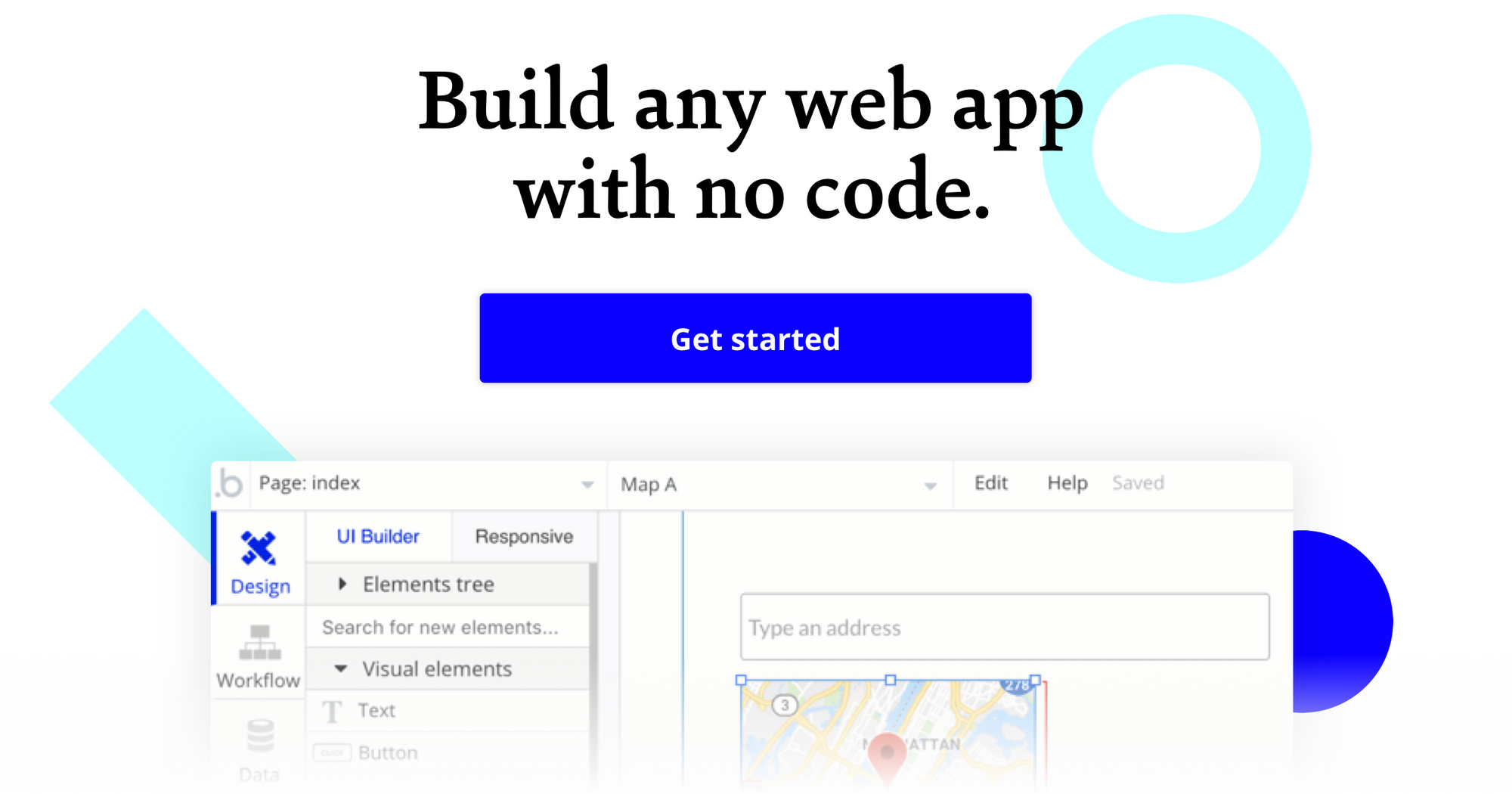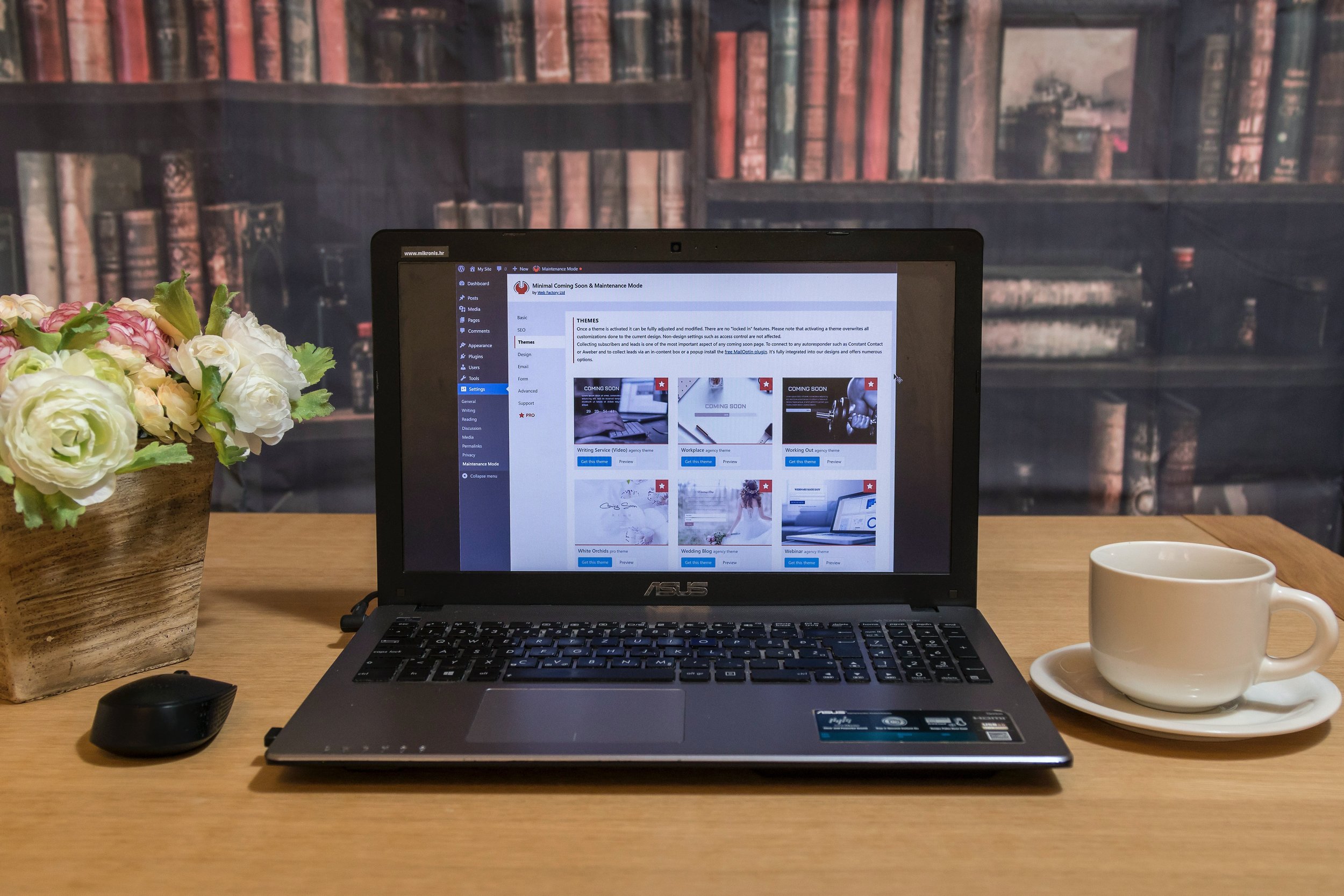Bubble templates: When, how and why to use them
Before starting the development of your app, there is a crucial moment that every entrepreneur must go through: choose if you want to use a template or develop it from scratch.
Be careful; saying from scratch doesn't necessarily mean choosing to code and hiring a professional developer or agency. Many low- and no-code platforms also have the option of starting your development from scratch, which can make a big difference when starting your app's development and subsequent scaling.
One of these applications is Bubble, one of the largest no-code platforms for web app development. This is one of the preferred platforms for entrepreneurs since it allows them to develop their MVPs and scale the platforms until they are fully functional without having to leave the bubble ecosystem.
Bubble offers you both options. You can start your development with the blank builder or choose one of the many templates available in their marketplace. Your choice can make a big difference in the future of your app, so today, we will talk about the importance of this decision in detail.
What are Bubble templates?
First, let's talk about the most important thing, the templates.
Generally, a template is a pre-made development you can find on a platform. Depending on the need, this can be focused on design or basic functionalities and have different customization possibilities.
Like most low- and no-code platforms, Bubble allows users to choose from a long list of templates to start their app development. The same Bubble's developer community usually creates these templates, so they have different levels of complexity and qualities with basic features depending on the template you choose. On the other hand, Bubble also gives users the possibility of developing from scratch, which means they are the ones who must create each functionality of their application. Setting both the back and front end of an app takes a lot of time, especially if you are a developer with no experience in the platform.
Although low- and no-code platforms are very user-friendly and are designed so that people without experience in the world of professional development can create an application themselves, they also have a learning curve that takes time, and some people do not want to invest this time in learning, for these people exist templates.
Bubble templates are designed to "speed up" the development of an app. Speed up is in quotes because if you still need to learn how the platform works, even if you have a fantastic template, you will find problems when it comes to modifying it.
The bubble templates are created to have attractive designs and the basic functionalities of some of the most common web applications. These are some of the categories that you can find in the marketplace:
CRMs
Dashboard
Landing pages
Marketplaces
E-commerce sites
Internal tools
Directory sites
On-demand services
Project management
Online stores
Bubble templates can have variable costs. In the marketplace, it is possible to find them from $149 to $399. On average, the best templates can be around $299.
We must remember that Bubble users are the ones creating these templates, so it is essential to look at the author and the rating of the template before deciding to buy one. Generally, the best-rated templates have an appealing design, an upright data structure, connected workflows, and strong security. There are basics you should look for when buying a template.
Bubble templates are an advantage over other platforms because they are 100% editable. You can make any changes in the back and front end; however, it's good to keep in mind that for this, you are not only going to ought to use the platform broadly, but you are going to need time to figure out how the template was developed, something that can take a long time, even for a professional. If you want to make too many changes to the functionality, it may be better for you to develop from scratch.
Foto de Pixabay at www.pexels.com
When to use a bubble template?
Now that we've reviewed the basics, let's reckon when to use a template. There are different reasons why people use templates, and we will discuss each.
You need to find out the platform.
When you are a newbie and need to learn the platform, many times, your first impulse is to go and select a template to start with. This, however, is only sometimes the best option since, to a large extent, you depend a lot on the quality of the template you choose.
When you want to develop your app "fast"
Some entrepreneurs are eager to market their applications. These people usually choose templates because they believe this will save development time and platform studies. However, a template will only partially fit your app (if it is, you will have to rethink your business model). Therefore, you will still have to invest time adjusting things and making the template fit you and your market.
Create an MVP
This is the most valid excuse to use a template. In many cases, MVPs need fundamental features to test, so it is possible to find templates similar to what you want to do with your application. This can save you a lot of time and money since you can quickly go to market, test your idea, secure some users, and invest in development from scratch with all the functionalities.
Don't reinvent the wheel
Some people like to make the easy complicated. However, many apps, especially those for internal company use, tend to have similar functions, if not the same. CMRs, task managers, etc., have already been invented and reinvented. There is no need to pay a professional developer or spend hours of your life on the platform if you can find a template with almost everything. In these cases, investing time in researching the appropriate template is ideal rather than creating something from scratch.
Tight budget
This is the fourth reason someone should use a bubble template. Often, entrepreneurs have a reduced budget or do not want to spend much money developing their apps. When this happens, getting a professional developer to help you build your app is almost impossible. In that case, the best thing you can do is find a suitable template that fits your needs and spend some time making the necessary adjustments.
Advantages of using a bubble template
Previously we already mentioned why some people use templates, and now we will mention some advantages of deciding on a template to start your development.
Save money
This is one of the main reasons you want to choose a template. As we said at the beginning, the prices in the bubble marketplace range from $149 to $399; this can be up to 10 times less than what you would pay to hire a professional developer.
However, you must remember that if you don't know the platform and are unwilling to invest time working on your template, these savings can turn against you. In that case, it is better to fund from the beginning.
Speed to market
A template can be the fastest and easiest way to develop an MVP, especially if you find one with all the basic functionality you need to test your idea. An MVP doesn't need to be perfect or have all the features. You should only have the basics to prove that a market is willing to buy what you sell.
Also, most MVPs should have basic features similar to other common apps. There is no need to spend thousands of dollars developing from scratch when you can buy a template and adapt it to your needs for a couple of hundred dollars.
Excellent for training and education
This third advantage has to do with familiarization with the platform. No-code platforms have a learning curve, so it's best to have some study time before building an app from scratch. It is also helpful if you want to understand a specific function. You can use the template to know how to build it and then use that knowledge to add the feature to your app.
Well-built templates are an excellent source of knowledge. If you spend some time on them, you can learn much about how Bubble works as a platform.
Foto de Tranmautritam at www.pexels.com
When NOT to use a bubble template
So far, we have mentioned the advantages of templates and when to use them. However, it is also important to note when you should not use a template and opt for investing time and/or money in developing from scratch.
You have already proved the idea
If you are already sure of your idea, you made an MVP and will start developing the first version of your app. It's best to invest in development from scratch, where you have full control and knowledge of what is both in the back and in the front end of your application. You can customize the features according to your needs and those of your clients. Remember that you will never find an exact fit, so you should create your app to distance yourself from the competition and not look like anyone else.
You need support
A template is not the best for you if you are not an expert on the platform and think you need support to build your app. Most bubble templates are made by users and community members, so only some come with support. Some come with documentation, but if you find a problem, it may take longer to understand, find and fix it than starting from scratch.
You only need a specific functionality
It's not worth paying a fortune just for a feature. In many cases, people love the idea of saving some time simply by paying for that template, but this can have several problems, including the fact that Bubble does not allow you to connect a template with an existing app and that the functionality, although it may be the that you need, does not necessarily fit precisely what you are building. Therefore, looking for a tutorial and learning how to develop such functionality independently is better.
You need scalability
Although Bubble allows a complete edition of the templates, they have excellent scalability potential; scaling a template you have not developed can take a long time. You'll need to figure out how it's built and all the back end and scale from there. This can be very time-consuming, so much so that it would be better to develop from scratch.
You have the time and/or budget
If you are an entrepreneur and have time or budget to work on your idea, save time starting with a template that you will probably have to rebuild completely.
If you have time to train and develop it yourself, it is best to do so. However, trust the experts if you have the budget to hire a professional developer or an agency like Soluntech for your development. This way, you can have the application you want in less time than it would take you, and they assure you of quality and a team of professionals who will deliver an impeccable final product.
Final conclusions
When it comes to developing your app, templates are useful. However, there are better options for owners who want to launch an app for their business, especially if they are developing a first or full version.
In the case of MVPs, things change. Templates are ideal for these stages; they allow you to save money and time, two very desirable things in this stage of development.
Yet, we must also recognize that templates are ideal training tools for people starting to use the platform but still on the learning curve. There may be more affordable ways to learn how to build it, but this will allow you to create small apps and learn how to develop some functionalities.
Finally, if you don't want a template and have no time to learn, trust a professional. It may be more expensive, but in the end, you will get a higher ROI, knowing that your app has no bugs and has been developed by experts.
If you want to start your development with a team of professionals and the best quality, contact us and schedule your free pre-consultation.




